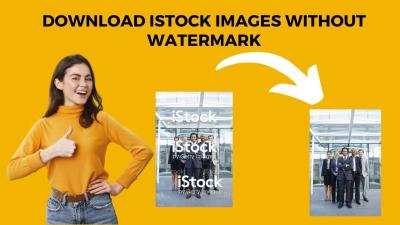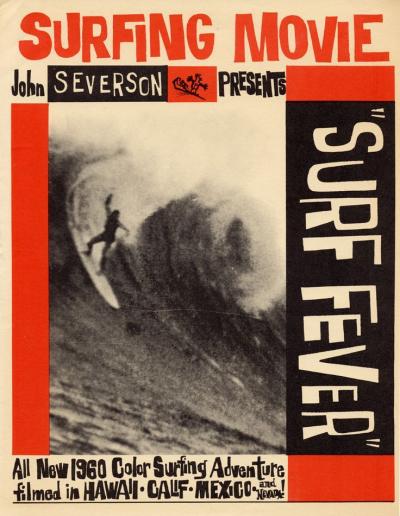The world of vector graphics has undergone significant transformation from its simplistic beginnings as clip art to the sophisticated modern graphics we see today. This evolution reflects technological advances, design trends, and changing user needs. Understanding this journey allows us to appreciate the ways in which vector graphics have become an integral part of visual communication in various fields, including marketing, web design, and digital art.
Understanding the Basics of Vector Graphics

Vector graphics are created using mathematical equations to define shapes, lines, and colors. Unlike raster graphics, which are made up of pixels, vector graphics maintain their clarity at any size due to their scalable nature. This means that designers can resize images without loss of quality, making vectors ideal for logos, illustrations, and typography.
Key characteristics of vector graphics include:
- Scalability: Vector files can be resized infinitely without loss of resolution.
- Editability: Individual elements in vector graphics can be easily modified.
- Small File Size: Vectors typically have smaller file sizes compared to raster images, making them easier to handle.
- Resolution Independence: They are not bound by a fixed resolution, allowing for high-quality output in print and digital formats.
Common file formats for vector graphics include SVG, EPS, and AI. Understanding these basics is crucial for designers as they harness vector graphics to create visually stunning and versatile artworks.
The Rise of Clip Art in Graphic Design

Clip art emerged as a popular graphic design resource in the late 20th century, marking a significant shift in how visuals were utilized in various media. Initially, it consisted of simple illustrations and images that were easily accessible and could be inserted into documents, presentations, and publications.
The appeal of clip art lay in its affordability and convenience, allowing non-designers to enhance their projects with professional-looking visuals. Major software suites, such as Microsoft Office, incorporated clip art libraries, making it a standard tool for many users. However, the limitations of clip art, such as lack of originality and the prevalence of overused images, also brought about a decline in its popularity.
As design technology advanced, the demand for custom and unique graphics grew, leading to the rise of modern vector graphics that emphasized originality and personalization. This transition reflects the ongoing evolution within graphic design, where creativity and innovation pave the way for new trends.
Transitioning from Clip Art to Vector Illustrations
As we look back at the journey of graphic design, one significant leap was the transition from traditional clip art to vector illustrations. Clip art, once the cornerstone of digital graphics, consisted of pre-made images that were often low-resolution and pixelated. They were great for basic needs but quickly became limiting when designers sought more flexibility and quality.
The early days of the internet were dominated by these simple graphics. Clip art was found in abundance on various platforms, offering a quick solution for presentations, newsletters, and websites. However, as design standards evolved, so did the demands for more sophisticated visuals. This led to the rise of vector graphics, which fundamentally changed the game.
Vector illustrations brought with them several advantages:
- Scalability: Unlike clip art, vectors can be resized without losing quality, making them perfect for everything from business cards to billboards.
- Editability: Vector graphics can easily be modified, allowing designers to adjust shapes, colors, and sizes without starting from scratch.
- File Size: Vectors typically have smaller file sizes compared to raster images, making them easier to share and store.
This transition wasn’t just a shift in technology; it reflected a broader change in design philosophy. Designers began to embrace creativity and artistry, pushing the boundaries of what could be achieved visually. Platforms dedicated to vector stock emerged, providing artists with the tools to create unique, high-quality illustrations while giving users access to a wider range of design options. Today, vector illustrations are widely recognized as a vital component in digital art and branding, showcasing how far we’ve come since the simplistic clip art of yesteryear.
The Impact of Technology on Vector Stock Development
The evolution of vector stock is undeniably tied to the advancements in technology. As software has become more sophisticated, so too has the capability of designers to create intricate vector graphics. Adobe Illustrator, released in the late 1980s, revolutionized the vector illustration landscape by providing powerful tools that artists needed to bring their visions to life.
With technology growing at a rapid pace, several key developments have significantly impacted vector stock:
- Improved Design Software: Tools like Affinity Designer and CorelDRAW have made vector design more accessible to a broader audience, democratizing the ability to create high-quality graphics.
- Cloud Technology: Stock vector platforms evolved to include cloud applications, enabling artists to upload, share, and sell their work globally without geographical barriers.
- Integration with Other Media: The ability to combine vector illustrations with other formats, such as raster images and 3D models, has expanded the ways designers can express their creativity.
Moreover, the rise of artificial intelligence is set to transform this landscape once again. AI-powered tools are helping artists generate vectors faster and with enhanced precision, allowing for more experimentation and freedom in design.
All in all, as technology continues to evolve, so too will vector stock, making it an exciting area to watch in the future of design.
Modern Trends in Vector Stock Graphics
In the world of vector stock graphics, innovation and adaptability are key. As design needs evolve, so do the trends that shape the vector stock landscape. Here are some modern trends that are making waves in this space:
- Flat Design and Minimalism: The rise of flat design has dramatically influenced vector graphics. Designers are embracing clean lines and solid colors, steering away from overly complex designs in favor of simplicity and functionality.
- Bold Illustrations: Bold colors and dynamic shapes are in vogue. This trend is characterized by illustrations that pop, drawing attention while maintaining clarity and ease of understanding. Think eye-catching visuals that scream modernity!
- Customizable Graphics: More designers are opting for vector graphics that can be easily customized. This trend allows for individual expression, ensuring that graphics feel unique and tailored to specific projects.
- Responsive and Mobile-Friendly Designs: As the mobile-first approach continues to dominate, vector graphics are being created with responsiveness in mind. These graphics easily adapt to different screen sizes, ensuring a seamless user experience.
- Integration of 3D Elements: The fusion of vector graphics with 3D elements is gaining traction. Designers are experimenting with depth in their illustrations, creating a sense of realism without losing the quintessential flat aesthetic of vectors.
With these trends in mind, it’s clear that the world of vector stock graphics is actively evolving, catering to both the needs of designers and the preferences of modern audiences.
Popular Platforms for Purchasing Vector Stock
If you’re diving into the realm of vector stock graphics, choosing the right platform is crucial. Luckily, there are several notable sites where you can find high-quality vectors. Here are some of the most popular ones:
| Platform Name | Key Features | Pricing Model |
|---|---|---|
| Adobe Stock | Integration with Adobe products, high-quality vectors | Subscription and pay-as-you-go options |
| Shutterstock | Extensive library, user-friendly interface | Subscription and image pack pricing |
| Freepik | Free resources with a premium option, vast collections | Free with attribution or subscription for premium access |
| iStock by Getty Images | High-quality stock, flexible pricing plans | Credit packages or subscription model |
| Vecteezy | User-generated content, community-driven | Free with attribution or subscription for more downloads |
Each of these platforms has its unique offerings, catering to different needs and budgets. Whether you’re looking for a specific graphic or browsing for inspiration, exploring these sites will certainly benefit your design projects!
How to Choose the Right Vector Stock for Your Project
Choosing the right vector stock can feel overwhelming with so many options available. Here are some tips to help you make the best choice for your project:
- Define Your Needs: Start by clarifying what you require. Consider the style, theme, and purpose of your design. Are you looking for something playful, professional, or abstract?
- Quality Matters: Always look for high-resolution files. Poor quality vectors can ruin the overall aesthetic of your project. Check for formats like SVG, EPS, or AI, which are ideal for scalability.
- Licensing and Usage: Understand the licensing agreements before purchasing or downloading. Some vectors are free for personal use but require a commercial license for business projects.
- Versatility: Choose vectors that can be easily customized. Look for designs that allow you to change colors, shapes, and sizes without losing quality.
- Source Reliability: Stick to reputable sources. Well-known platforms often ensure quality and offer good support. Research customer reviews or seek recommendations.
Remind yourself that the right vector can elevate your design and ensure it stands out. Don’t rush your selection; take your time to browse, compare, and reflect on what will resonate best with your audience.
The Future of Vector Stock in Graphic Design
The future of vector stock in graphic design is bright and filled with innovation. Here are some trends and predictions to look out for:
- AI-Generated Vectors: With advancements in artificial intelligence, we can expect an increase in AI-generated vector graphics that offer unique styles and concepts, allowing designers to find inspiration and stay ahead of trends.
- Interactive and 3D Elements: As technology continues to advance, we may see a rise in interactive vectors and 3D graphics that can adapt to user interactions, enriching the user experience.
- Customizable Content: The demand for personalized content is growing. Future vector stock might focus on offering customizable graphics that can be easily tailored to fit specific branding needs.
- Improved Search Features: Enhanced search capabilities using keywords, colors, and styles will make finding the perfect vector a seamless experience. Expect smarter algorithms that suggest vectors based on user preferences.
- Sustainability in Design: As awareness of environmental issues increases, future vector stock will likely emphasize sustainable design practices, encouraging creators to make eco-friendly choices.
In essence, the future of vector stock isn’t just about aesthetics; it’s also about functionality, creativity, and sustainability. Staying attuned to these developments will empower designers and enable them to create more impactful and innovative work.
The Evolution of Vector Stock From Clip Art to Modern Graphics
The journey of vector stock images has undergone significant transformations since its inception. Initially, vector graphics were synonymous with simple clip art, widely used in presentations, newsletters, and early website designs. The primary purpose was to provide basic illustrations with limited artistic depth.
Here’s a brief timeline showcasing this evolution:
| Year | Milestone |
|---|---|
| 1980s | Rise of clip art libraries; early vector graphics software like MacDraw emerges. |
| 1990s | Advent of desktop publishing leads to increased demand for polished vector graphics. |
| 2000s | Introduction of high-quality vector stock websites; enhanced technology allows for complex designs. |
| 2010s | Explosion of user-generated content platforms; integration of vector graphics in social media and advertising. |
| 2020s | Emergence of AI-generated vector graphics; a focus on hyper-realistic and 3D designs. |
Modern vector graphics now embrace a range of styles and functionalities, from minimalistic icons to intricate illustrations. The addition of tools like Adobe Illustrator has allowed designers to push the boundaries of creativity.
Some key factors fueling this evolution include:
- Technology Advancements: Software improvements have enabled artists to create more sophisticated designs.
- Accessibility: The rise of online vector stock platforms democratized access to high-quality graphics.
- Trends in Design: Increased demand for unique visual content has led to a broader array of styles, including flat design and 3D graphics.
In conclusion, the evolution of vector stock from basic clip art to modern graphics reflects technological advancements, changing design trends, and the growing need for creative expression in an increasingly digital world.


